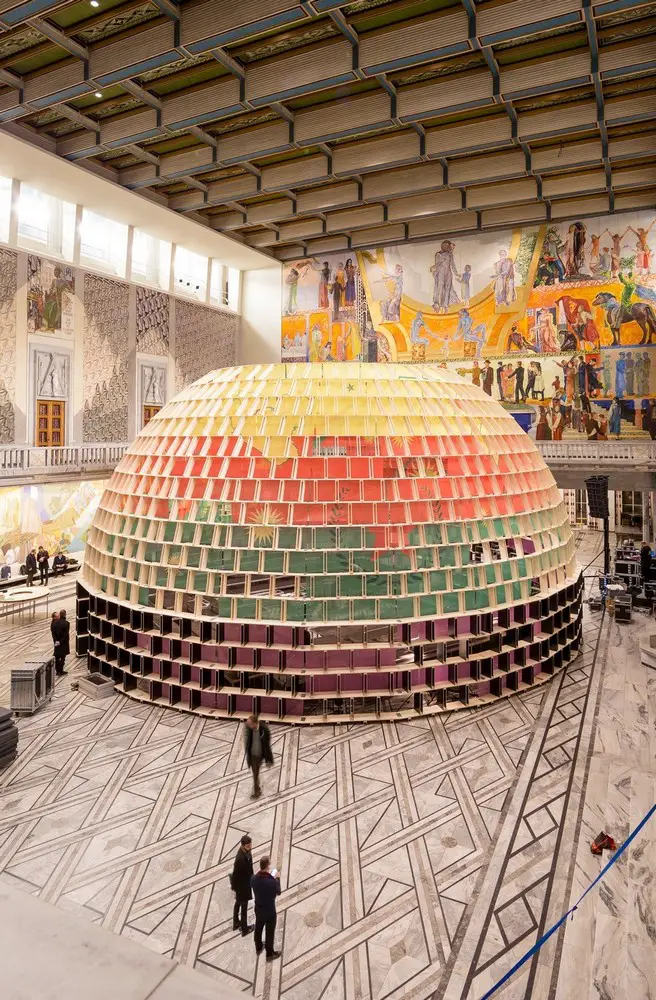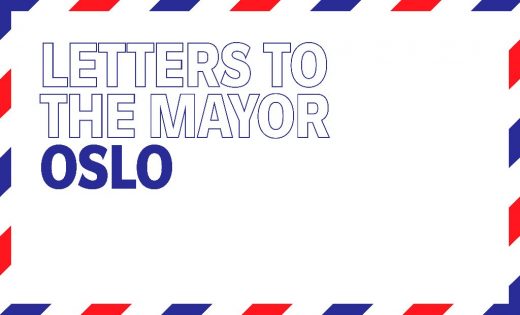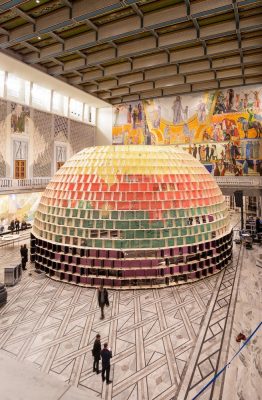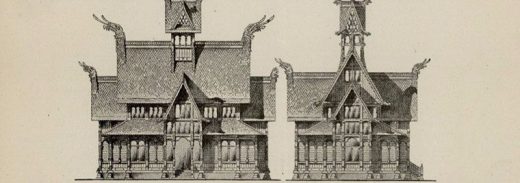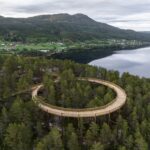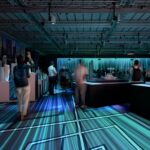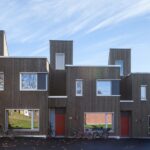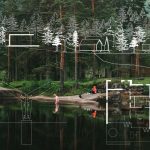Oslo Architecture Triennale 2018, Architectural Exhibitions Norway, Architects, Project
Oslo Architecture Triennale 2019
OAT – Extended Program: National Museum + Norwegian Centre for Design and Architecture Exhibitions
21 June 2019
Oslo Architecture Triennale 2019
Oslo Architecture Triennale 2019
14 Sep 2018
Oslo Architecture Triennale Autumn Program 2018
12 Jan 2018
Oslo Architecture Triennale News
Letters to the Mayor: Oslo News
A report of letters, participants, events and discussions that made up “Letters to the Mayor: Oslo“, in 2017 has been published.
The report, which is in Norwegian, also contains a transcript of the Mayor’s speech at the exhibition opening, as well as images and a brief summary of the events that took place during the exhibition.
The Oslo Architecture Triennale (OAT) organized the project in collaboration with Storefront for Art and Architecture. You can read more about Letters to the Mayor and its international iterations, including Oslo, at Storefront for Art and Architecture‘s website.
27 Sep 2017
Letters to the Mayor: Oslo
Oslo, 26 September, 2017: Letters to the Mayor: Oslo presents a collection of letters written by architects to Oslo’s Mayor Marianne Borgen, bringing pressing issues and new ideas to her desk. Letters to the Mayor: Oslo is part of an international series initiated by Storefront for Art and Architecture.
“The letters raise concerns and present ideas both about current building and development processes in the city, but also about maintaining Oslo’s distinctive character amidst the city’s rapid growth and development. Among these and many other issues, several architects also advice the Mayor not to let short-term interests predominate the development at the expense of sustainability and democracy,” says Hanna Dencik Petersson, Director of Oslo Architecture Triennale.
Letters to the Mayor invites architects to write letters to their Mayors, initiating a dialogue between those who represent a city and those who build it. 44 Norwegian and international architects, most of whom work in Oslo but all with a professional relation to the city, have written letters to the Mayor of Oslo.
Click here to download the letters of:
Andre Tavares,
Juan Herreros
Juan Ruiz and Paula Simone
Vibeke Jensen, Anders Rubing and Deane Simpson
Exhibition design
As all iterations of Letters to the Mayor, the exhibition in Oslo includes a mayoral desk, an architect’s working table and a wallpaper, in addition to the letters addressed to the Mayor.
The exhibition in Oslo, which is designed by the Norwegian architect and artist Tron Meyer, presents the letters on the architects’ working table. The mayoral desk is defined by the organic silhouette of a person’s head.
“We have taken the letters back to the architect’s table, giving visitors a chance to sit down, pick up the letters and spend time reading and exchanging ideas. The mayoral desk symbols the recipient of the ideas and thoughts presented in the letters,” says Tron Meyer.
Participants
Anders Rubing, André Tavares, Andreas Vaa Bermann, Anne Gjesdal Bjørndal, Aslak Krogness Haanshuus, Astri Margareta Dalseide, Bryony Roberts, Camilla Moneta, Caroline Hatlen Støvring, Cecilie Wille, Charlotte Helleland, Deane Simpson, Einar Dahle, Elisabeth Søiland, Team Element, Frederica Miller, Fredrik A S Torp, Fredrik Shetelig, Geir Haaversen, Gro Lauvland, Gudmund Stokke, Hege Maria Eriksson, Håkon Matre Aasarød, Inger-Lise Saglie, Inger-Marie Hølmebakk, Ingvil Aarholt Hegna, Iwan Thomson, Janne Wilberg, Johanne Borthne, Jonas Gunerius Larsen, Jonas Norsted, Juan Herreros, Juan Ruiz, Julien De Smedt, Julie Sjøwall Oftedal, Karoline Birkeli-Gauss, Kjersti Vangberg, Klaus Schuwerk, Kristin Notø, LINK arkitektur, Magnus Berg Jørgensen, The MakersHub team, Marianne Skjulhaug, Marianne Sætre, Marie Hallandvik Hortemo, Matti Lucie Arentz, Niels de Bruin, Niels Marius Askim, Paola Simone, Saaha, Silje Klepsvik, Transborder Studio, Vibeke Jensen, Åsne Hagen.
Mayor of Oslo:
Marianne Borgen (SV / the Norwegian Socialist Left Party)
The exhibition is on display at Design and Architecture Norway (DOGA) until 22 October, 2017.
All images are courtesy of Oslo Architecture Triennale
About the contributors:
About Tron Meyer
Tron Meyer is a Norwegian artist and architect. He holds a Master degree of painting and sculpture from the Oslo National Academy of the Arts, and a second Master degree in architecture from the Oslo School of Architecture and Design. Today he runs his own studio related to art and design, and Is a managing director for Risa Meyer AS, a company that offers design and distribution of innovative staircases. More info: risameyer.com
About Letters to the Mayor
Letters to the Mayor is a project initiated by Storefront for Art and Architecture (based in New York City) in 2014. Since its start, the project has been presented in various cities across the world, including Bogota, Mexico City, Athens, Taipei, and Lisbon, among others. Each iteration of Letters to the Mayor invites 100 architects to write a letter to their mayor as a means of bringing innovative ideas and visions of the city closer to the decision-makers, and vice versa.
Storefront for Art and Architecture initiated Letters to the Mayor in New York City in 2014 with a collection of fifty letters from international architects who wrote to their mayors. Subsequent iterations, organized in partnership with local institutions and groups, have brought local and international issues onto the desks of elected officials and into the public consciousness by focusing on the specific issues unique to each city. More info here.
About Oslo Architecture Triennale
Oslo Architecture Triennale (OAT) is the Nordic region’s biggest architecture festival, and one of the world’s prominent arenas for dissemination and discussion of architectural and urban challenges.
Through exhibitions, conferences, debates, competitions, publications and events across different formats and media, OAT seeks to challenge the field of architecture, engage the public and inspire local, Nordic and international debates concerning architecture and urbanism. More info: oslotriennale.no
While OAT is held every third autumn in Oslo, it works continuously to develop and produce content with a relevance beyond the triennale itself. Currently, OAT is calling for a new topic and Chief Curator for its seventh iteration to be held in Oslo in the autumn of 2017.
More information about the Open Call for Curator .
About Storefront
Storefront for Art and Architecture advances innovative and critical ideas that contribute to the design of cities, territories, and public life. Storefront’s exhibitions, events, competitions, publications, and projects provide alternative platforms for dialogue and collaboration across disciplinary, geographic, and ideological boundaries. Since its founding in 1982, Storefront has presented the work of over one thousand architects and artists.
Storefront provides physical and digital spaces for experiments, and the organization is known widely for its downtown Manhattan gallery space designed by Steven Holl and Vito Acconci. In recent years, an expansion of Storefront’s international programming and commitment to spatial experimentation make it one of the only platforms focusing on art, architecture, and design that addresses and fundamentally changes the way we think about society and the built environment on a global scale. More info: storefrontnews.org
27 Nov 2016
Oslo Architecture Triennale 2016 Closing Weekend
Oslo Architecture Triennale Closing Weekend
Oslo Architecture Triennale 2016
After Belonging
New World Embassy: Rojava
November 26–27, 2016
Oslo City Hall, Oslo, Norway
oslotriennale.no
The New World Embassy: Rojava is a temporary embassy installed in the Oslo City Hall that represents, through cultural means, the ideals of “stateless democracy” developed by the Democratic Self-Administration of the autonomous region of Rojava, northern Syria. The Embassy consists of a large-scale oval-shaped architectural structure, designed as an “ideological planetarium.”
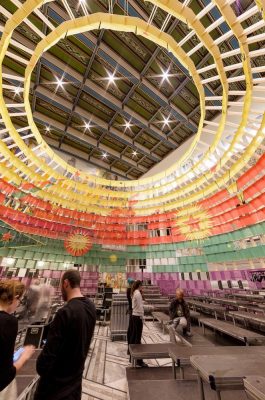
photos : Ernie Buts. Courtesy of the Democratic Self-Administration of Rojava and Studio Jonas Staal
The Embassy operates for two consecutive days, bringing representatives from Rojava together with international politicians, diplomats, academics, journalists, students, artists, and more. Through open deliberation and public discussion the New World Embassy: Rojava proposes a platform to build new transnational relationships and explore alternative models of people’s diplomacy.
The New World Embassy: Rojava is a collaboration between the Democratic Self-Administration of Rojava and Studio Jonas Staal. The project is part of the Oslo Architecture Triennale 2016, After Belonging: A Triennale In Residence, On Residence and the Ways We Stay in Transit, and it is financed and co-produced by KORO – Public Art Norway / URO.
After Belonging: A Triennale In Residence, On Residence and the Ways We Stay in Transit is curated by Lluís A. Casanovas Blanco, Ignacio G. Galán, Carlos Mínguez Carrasco, Alejandra Navarrete Llopis, and Marina Otero Verzier.
Program
The two-day public program offers debates and conversations with local and international experts centered around four topics departing from the ideals and achievements of the Rojava revolution.
Saturday, November 26, 1–7pm
From History & Politics to Culture & Self-determination
The first day of the New World Embassy: Rojava is dedicated to the history and politics of the Rojava revolution, the concept of stateless democracy, and the role of culture in self-determination.
1pm Welcome and introduction
Marianne Borgen (Mayor of Oslo)
Refik Gefur and Seher Aydar (Kurdish Communities of Oslo)
Jonas Staal (artist and founder of the New World Summit)
1:40pm Keynote
Sînam Mohammed (Democratic Self-Administration of Rojava)
2:15pm Panel I—History & Politics
Chaired by Joost Jongerden (University of Wageningen)
Sînam Mohammed
Kariane Westrheim (University of Bergen)
Macer Gifford (People’s Protection Units, YPG)
3:20pm Response
Eulàlia Reguant i Cura (Popular Unity Candidacy, CUP)
4:30pm Welcome
Refik Gefur and Seher Aydar
Marina Otero Verzier (After Belonging Agency)
4:50pm Keynote
Aldar Xalîl (Movement for a Democratic Society, Tev-Dem)
5:25pm Panel II—Culture & Self-Determination
Chaired by Maria Hlavajova (BAK, basis voor actuele kunst Utrecht)
Aldar Xalîl
Moussa Ag Assarid (Free Azawad)
Shela Sheikh (Goldsmiths, University of London)
Laura Raicovich (Queens Museum)
6:50pm Response
Baluchistan People’s Party
7pm Conclusion
Sunday, November 27, 1–7pm
“Conflict & Diplomacy” to “Solidarity & Transdemocracy”
The second day of the New World Embassy: Rojava is dedicated to understanding the conflict in Rojava and Syria, exploring alternative models of stateless diplomacy, and building transdemocratic solidarity and collaboration between emancipatory movements worldwide.
1pm Welcome
Refik Gefur and Seher Aydar (Kurdish Communities of Oslo)
Hanna Dencik Petersson (Oslo Architecture Triennale)
Introduction Jonas Staal (artist and founder of the New World Summit)
1:30pm Keynote
Asya Abdullah (Co-Chair Democratic Union Party, PYD)
2:05pm Panel III—Conflict & Diplomacy
Chaired by Radha D’Souza (University of Westminster)
Asya Abdullah
Hanne Sophie Greve (Judge at the Gulating High Court of Western Norway)
Runar Myrnes Balto (Sámi Parliament)
Sana Soleman Elmansouri (World Amazigh Congress)
3:20pm Response
Natalie McGarry (MP Westminster Parliament for Glasgow East)
4:30pm Welcome
KORO Public Art Norway, URO
4:45pm Keynote
Salih Muslim (Co-Chair Democratic Union Party, PYD)
5:20pm Panel IV—Solidarity & Transdemocracy
Chaired by Radha D’Souza (University of Westminster)
Salih Muslim
Katerin Mendez (Feminist Initiative!)
Kate Shae Baird (Barcelona en Comú)
Despina Koutsoumpa (ANTARSYA)
Lorenzo Marsili (DiEM25/ European Alternatives)
7pm Closing words
Refik Gefur and Seher Aydar
19 Sep 2016
Oslo Architecture Triennale 2016 News
OAT – Norwegian Architecture Festival
EXTENDED PROGRAM: WHAT’S ON THIS WEEK
The Triennale’s Extended Program is developed in collaboration with a wide specter of institutions and professionals, with the aim to expand the discussions raised in the Triennale. Welcome to take part in the conversations, lectures, exhibitions, and more, offered in this week’s program.
21, 22 and 23 September, Gallery ROM
Little Norway: Discuss and participate in a dugnad
In the exhibition Little Norway at Gallery ROM, Wednesday this week, join a conversation about the Norwegian concept of dugnad. On Thursday and Friday, you can also join in the restoration of an old stave church, which has returned to Norway after 150 years in the USA. Read more about the exhibition
20 September, 17:30–19:00, Intercultural Museum, Oslo
Debate: Experimenting Borders – about borders and their limits
In this conversation, Marianne Amar talks about living in exile and Yvan Gastaut reflects upon crossing borders. Philippe Rekacewicz moderates. Read more
21 September, 15–18, Tøyen Torg
Workshop: Communication through Creation
ByVerksteded provides tools and knowledge, and offers an opportunity to explore both existing and new skills. ByVerkstedet builds on a sharing culture and aims to promote a feeling of community and belonging. Read more
22 September, 18:00, Vesper Gastrobar, Barcode
Barcode After Work: a-lab on the process with Master Plan for Barcode
Barcode After Work is a series of mini seminars about architecture and urban development focusing on the area of Barcode. What happens at the ground in Barcode? What does the future work space look like? How do people live in this part of the city? What is the history of this are? Read more
22 September, 18:00, Arkitektenes Hus
ArchDaily editor David Basulto on the internet and opportunities
Founder and editor of ArchDaily, David Basulto, talks about internet and its opportunities. Read more.
22 September, 13:00, Oslo School of Architecture and Design (AHO)
Ten takes on After Belonging: Luis Callejas
The Oslo School of Architecture and Design presents the second in a series of ten lectures connected to the topic of After Belonging. Read more
Until 24 September
Cartographie Culturelle: A study of cultural venues in Oslo and Paris
Cartographie Culturelle is an ongoing exploration of cultural institutions and their role in the cultural, urban and social development of the city. The project leading up to this exhibition has been led by a network of French-Norwegian architects and students. Les mer
Until 2 October
City Walk: Footnotes, an audioguide by Jon Benjamin Tallerås
Footnotes (2016) is an audio guide for the streets of Old Oslo, which takes listeners on a walking tour of highlights from the artist’s many journeys on foot through this urban landscape. The project is also part of Munchmuseet on the Move. Read more
Until 27 November
HERFRA: A treasurehunt after local belonging
Whether you belong in Oslo or not, HERFRA reveals local stories of belonging through the streets of Oslo. Download a digital map and take up your pursuit after belonging i Oslo. Read more
3 Sep 2016
Oslo Architecture Triennale 2016
OAT – Norwegian Architecture Festival
Chief Curators, Publication Editors, and Exhibition Designers : Lluís Alexandre Casanovas Blanco, Ignacio G. Galán, Carlos Mínguez Carrasco, Alejandra Navarrete Llopis and Marina Otero Verzier
Being at home has different definitions nowadays, both within domestic settings and in the spaces defined by national boundaries.
After Belonging addresses and imagines the objects, spaces, and territories of a transforming condition of belonging. Global circulation of people, information, and goods has destabilized what we understand by residence, questioning spatial permanence, property, and identity—a crisis of belonging.
These transfers bring greater accessibility to ever-new commodities and further geographies. But, simultaneously, circulation also promotes growing inequalities for large groups, kept in precarious states of transit. After Belonging analyzes the ways in which architecture participates and intervenes in both our attachment to places and collectivities—Where do we belong?—as well as our relation to the objects we produce, own, share, and exchange—How do we manage our belongings?
Oslo arkitekturtriennale. Pengeoverføringsarkitektur / Remittance Architectures in Risaralda:
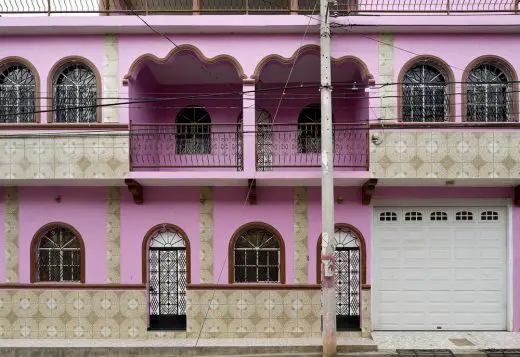
Photographer / Source Courtesy of Andrés Asturias, 2010
The Oslo Architecture Triennale 2016 is divided into two parts:
-A triennale On Residence, in which to collectively analyze the spatial conditions that shape our ways of staying in transit and the definition of our contemporary spaces of residence.
-A triennale In Residence, in which international architects and professionals concerned with the built environment will engage in local collaborations in Oslo, the Nordic region, and around the globe, to intervene in the transformation of residence.
How can different agents involved in the built environment address the ways we stay in transit? How can architects intervene in the reconfiguration of the contemporary residence?
Oslo arkitekturtriennale. Flerkulturell bydel / Transnational Neighborhood in Tensta, Stockholm:
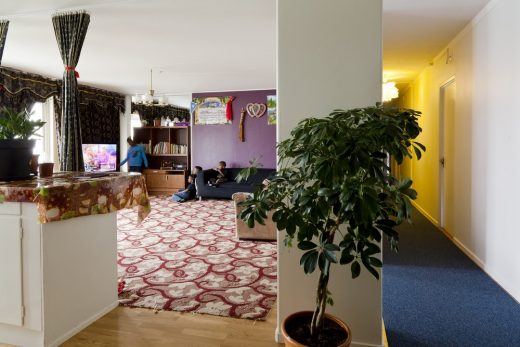
Photographer / Source Photo: Matti Östling, 2012
CORE PROGRAM
After Belonging: On Residence
After Belonging: On Residence documents the spatial conditions that shape our ways of staying in transit and the definition of our contemporary spaces of residence. It considers the aesthetic, technical, and sociopolitical implications of this definition. Architecture here takes different forms beyond the building, from arrangements of objects and their logistics, to territorial configurations and digital systems of organization.
The exhibition displays a series of contributions gravitating around five areas: Borders Elsewhere, Furnishing After Belonging, Sheltering Temporariness, Technologies for a Life in Transit, and Markets and Territories of the Global Home. Arranged as an accumulation of evidences and speculations, the On Residence exhibition unveils the multiple scales and media involved in the architectures of contemporary forms of residence and how they convey new articulations between individuals, objects, technologies, collectives and territories.
After Belonging: In Residence
After Belonging: In Residence focuses on a selection of ten sites around the globe that encapsulate current transformations of belonging. It is a speculative platform organized through commissioned reports and intervention strategies considered as two distinct and related architectural operations to approach those sites. The reports outline diverse ways of describing the sites, offering multifaceted perspectives and bringing together different scales.
In addition, five intervention strategies have been selected for the sites located in Oslo and the Nordic region, through an international open call. These interventions design tactical and long-term forms of engagement with the sites, and rehearse alternative architectural practices. By bringing together these different approaches, the In Residence exhibition aims to test the capacity of architectural expertise to respond to changing realities.
Oslo arkitekturtriennale. Torshov transittmottak / Asylum and Shelter Provision in Oslo:
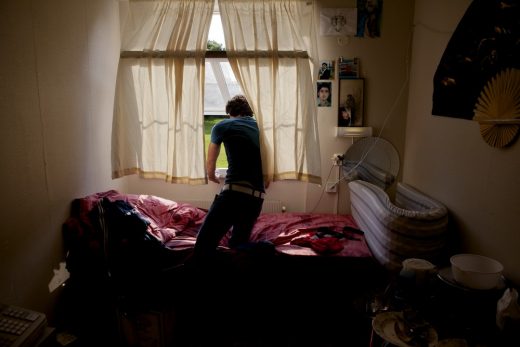
Photographer / Source Photo: Javad Parsa, 2013
Official Publication of the Oslo Architecture Triennale 2016
After Belonging: The Objects, Spaces, and Territories of the Ways We Stay in Transit
The After Belonging publication brings together commissioned essays exploring theoretical arguments, historical case studies, and narrative voices, with a compilation of contributions presented in the different Triennale’s platforms. Working as an archive, it contextualizes each contribution within wider conversations and fosters relationships between the works.
The After Belonging Conference
The After Belonging Conference invites architects, thinkers, decision-makers, and local experts to collectively dissect the questions at stake in the Triennale. It will address new modes of practice emerging from architecture’s changing relationship to permanence, property, and identity; the complexities of architectural action related to migration and refugeeism; and the new economic, social, and cultural networks framing the contemporary constructions of domesticity and foreignness.
The Embassy
The New World Embassy: Rojava is a stateless embassy that represents, through cultural means, the ideals of “stateless democracy” developed by Kurdish communities of the autonomous region of Rojava in northern Syria. The embassy is conceived and designed by Studio Jonas Staal in collaboration with the Democratic Self-Administration of Rojava and takes the form of a temporary installation in Oslo.
The Academy
The Academy is an academic forum organized by the Oslo School of Architecture and Design AHO. It will bring schools and students from around the world into a global dialogue and knowledge-sharing experiment, reflecting on the topics of the Triennale. By introducing long-term academic conversations and collaborations, the Academy aims to have a lasting impact on architectural education and practices.
Oslo arkitekturtriennale. Helseturisme / Healthcare Tourism in Dubai:
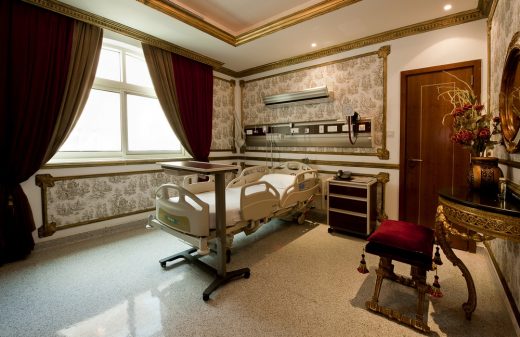
Photographer / Source Photo: Paul Macleod, 2015
EXTENDED PROGRAM
The Oslo Architecture Triennale will include a series of Extended Program, both in Oslo and around the various In Residence Sites that respond to the curatorial framework for OAT 2016: After Belonging. These programs are expected to multiply the perspectives and formats of the discussion taking place at the Triennale
Oslo arkitekturtriennale. «Managing Dissidence in Gardermoen», Bollería Industrial / Factory-Baked Goods:
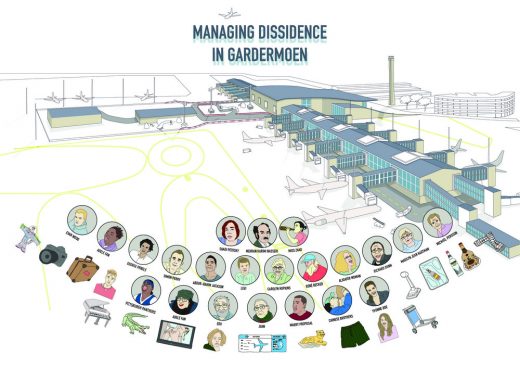
image from Nasjonalmuseet – Norway
The Oslo Architecture Triennale
Oslo Architecture Triennale (OAT) is the Nordic region’s biggest architecture festival, and one of the world’s main arenas for investigation, discussion and dissemination of architectural and urban challenges. Through various events and media, OAT seeks to challenge the field of architecture, engage the public and inspire local and international debate. OAT is a knowledge-driven Triennale, which continuously develops and produces content with relevance that goes beyond the triennale itself.
Oslo arkitekturtriennale. Produksjonskonglomerater / Manufacturing Assemblages in Prato:
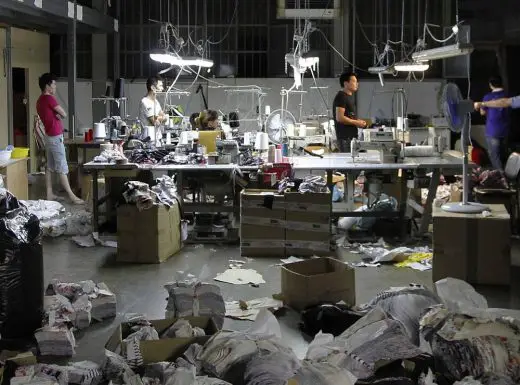
Photographer / Source Photo: Nadia Shira Cohen, 2010
1 Sep 2016
Oslo Architecture Triennale 2016 Events
Norwegian Architecture
Nasjonalmuseet – Norway
Oslo Architecture Triennale: Where do we belong?
Nasjonalmuseet – Norway – Sep 01, 2016 10:58 BST
Exhibition: “After Belonging. In Residence”
Place: National Museum – Architecture, Bankplassen 3, Oslo
Period: 8 September – 27 November 2016
This year’s Oslo Architecture Triennale explores the ways we relate to places and communities. The 2016 triennale presents two main exhibitions: “In Residence” at the National Museum – Architecture, which runs in parallel with “On Residence” at the Norwegian Centre for Design and Architecture. The two exhibitions illustrate how our sense of identity and belonging is constantly changing.
Oslo arkitekturtriennale. Tekno-religiøse samfunn / Techno-Religious Communities in Lagos. Photo: Robin Hammond, ca. 2013:
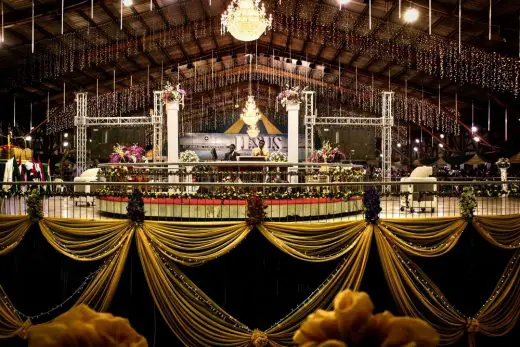
Photographer / Source © Robin Hammond and National Geographic
Where do we belong? How do we relate to the things we own, share and exchange? And how do we administrate what belongs to us? In a world increasingly characterised by mobility and impermanence, our sense of belonging is constantly changing. The exhibition “After Belonging. In Residence” addresses themes such as migration, new types of accommodation, technology that promotes new markets and sharing economies, and new ways of being local and alien.
Oslo arkitekturtriennale. Boligdelingstjenester / Home Sharing Platforms in Copenhagen:

Photographer / Source Cher by Caitlin Blanchfield, Glen Cummings, Jaffer Kolb, Farzin Lotfi-Jam og Leah Meisterlin
The exhibition focuses on ten locations around the world, all of which illustrate how our sense of identity has changed. The selected locations are Copenhagen, Dubai, Gardermoen, Kirkenes, Lagos, New York, Prato, Risaralda, Stockholm and Torshov.
The exhibition presents ten commissioned reports and five intervention strategies. Collectively, these represent two distinct but related architectural approaches to the selected sites. The ten reports describe the various locations in a range of ways that provide richly nuanced perspectives. The five intervention strategies for the Nordic locations were selected by a jury following an international competition. Each strategy proposes tactical and long-term projects for its respective location, reflecting alternative ways of working with architecture. “In Residence” presents the various approaches and explores the possible ways architecture can address the new realities.
Oslo arkitekturtriennale. Minilagerbygninger / Self Storage Facilities in New York:
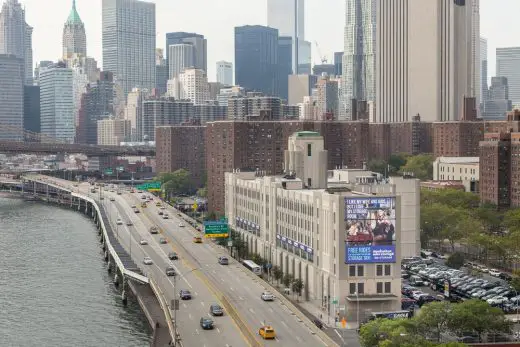
Photographer / Source Photo: Brett Beyer, 2015
Event programme at the National Museum – Architecture, opening weekend 8-11 September 2016
Free admission to the exhibition and all events on the opening weekend.
Thursday 8 September
16.00–19.00: The exhibition is open. Speeches and party at DOGA from 7 p.m.
Friday 9 September
18.30–20.00: Roundtable discussion with three reporter teams from the exhibition: James Bridle (Gardermoen, Oslo), Husos Architects (Risaralda, Colombia) and Matilde Cassani (Prato, Italia)
19.30–21.00: Open terrace BAR and DJ at the National Museum – Architecture, followed by:
21.00–02.00: PARTY IN RESIDENCE. Party in the former premises of the Astrup Fearnley Museum of Modern Art. Free admission. Bar and DJ. Venue: Gamle Museet (Dronningens gate 4, Oslo)
Saturday 10 September
14.00–16.00: Speed date. Meet the participants in the exhibition. Introduction by two of the teams who have been working on intervention strategies: Bollería Industrial (Oslo Airport Gardermoen) and Cher (Copenhagen)
Sunday 11 September
Guided tours with the curators
13.00: DOGA, part 1
14.30: The National Museum – Architecture, part 2
Nasjonalmuseet – We Build A New Future For Art!
Oslo Architecture Triennale: Where do we belong?
Oslo arkitekturtriennale. Ressursforhandlinger / Resource Negotiations in Kirkenes:
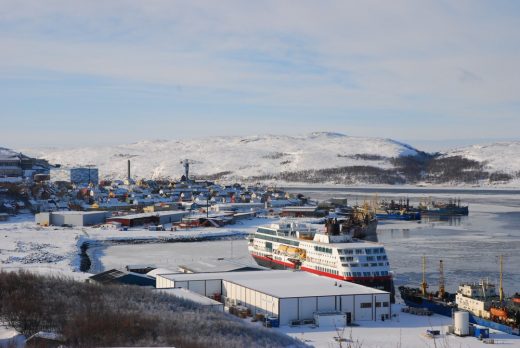
Photographer / Source Photo: Mathis Herbert, 2009
About Nasjonalmuseet – Norway
The National Museum holds, preserves, exhibits, and promotes public knowledge about, Norway’s most extensive collections of art, architecture and design.
National Museum of Art, Architecture and Design Norway
Website : Oslo Architecture Triennale 2016
The Beauty and Brutality of the City at Nasjonalmuseet, Oslo, Norway
Location: Oslo, Norway
Norwegian Architecture
Contemporary Norwegian Buildings
Norwegian Building Designs – chronological list
Architecture Tours in Oslo by e-architect
Norwegian Architecture – Selection:
Design: HerrerosArquitectos
Munch Museum Building Oslo
Design: Snøhetta
Oslo Operahouse
Website: Oslo, Norway
Barcode Development Oslo – Bjørvika Buildings
Design: a-lab, architects
Eco Cube Oslo
Comments / photos for the Oslo Architecture Triennale 2018 – page welcome
Website : Oslo

